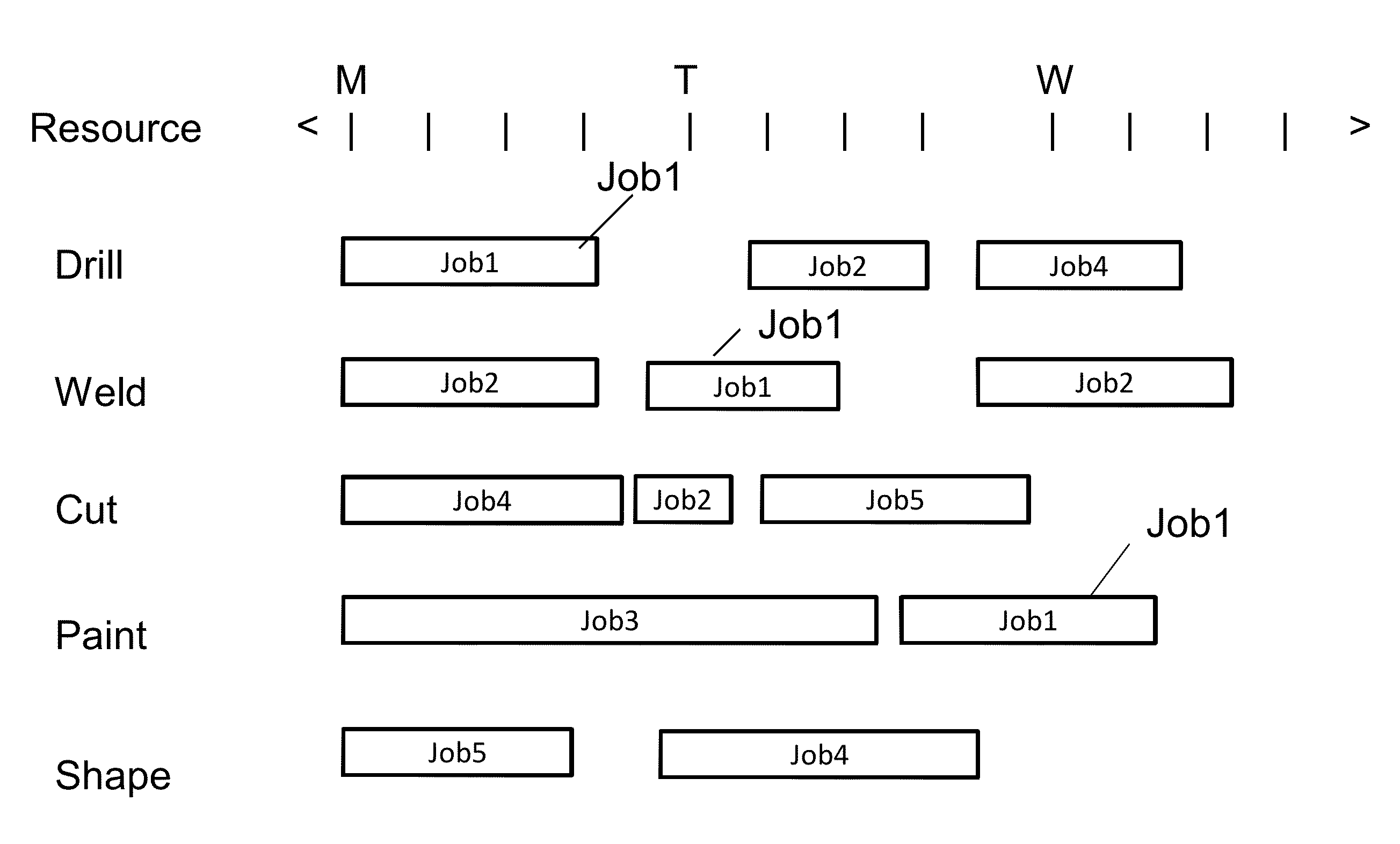Simulation-based risk analysis for finite capacity scheduling
- Summary
- Abstract
- Description
- Claims
- Application Information
AI Technical Summary
Benefits of technology
Problems solved by technology
Method used
Image
Examples
Embodiment Construction
[0024]The present invention addresses the problem of providing the scheduler with both a deterministic plan such as shown in a Gantt chart (the role of traditional FCS software), along with additional information that can be used to judge the risk of the schedule when taking into account both the variations in the elements of the system (e.g. task times), as well as the unplanned events (e.g. machine breakdowns). The basic concept is to have a stochastic simulation model of the facility that incorporates the variations in elements and randomly generated events to provide stochastic estimates of risk measures. This model is also used to generate the schedule, however when generating the schedule the random variations in the elements and events are turned off, thereby generating a deterministic schedule. The same model can then be reused with the variations and random events turned on to generate risk measures for the associated deterministic schedule.
[0025]The elements that vary in t...
PUM
 Login to View More
Login to View More Abstract
Description
Claims
Application Information
 Login to View More
Login to View More - R&D
- Intellectual Property
- Life Sciences
- Materials
- Tech Scout
- Unparalleled Data Quality
- Higher Quality Content
- 60% Fewer Hallucinations
Browse by: Latest US Patents, China's latest patents, Technical Efficacy Thesaurus, Application Domain, Technology Topic, Popular Technical Reports.
© 2025 PatSnap. All rights reserved.Legal|Privacy policy|Modern Slavery Act Transparency Statement|Sitemap|About US| Contact US: help@patsnap.com



